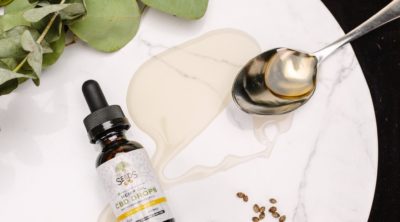
Ginkgo biloba is a popular medicinal herb, widely used and studied these days. This article gives you some brief information about this tree.
Ginkgo biloba, also called Maidenhair-tree, is the oldest tree on the Earth. The word ‘Ginkgo’ is derived from the Chinese word yah-chio which means ‘foot of the duck.’ The leaves of the tree have the shape of a duck foot, hence the name.
History of Ginkgo Biloba
Ginkgo biloba trees are supposed to be the oldest trees on Earth, living since the age of the dinosaurs. It is a lone survivor of the plant family that existed 200 million years ago. Hence, Ginkgo biloba is also called ‘living fossil.’ 200 million years ago, they were found on every part of the Earth; but as time passed, they survived only in the far east regions. China is the main habitat of these trees, and in historical times, China was considered as their origin. In those days, the Ginkgo biloba was used for medication and culinary purposes. There is also written evidence that these trees existed in 19th century. However, it was only in 1916 that the tree was discovered in a valley in China. These trees are predominantly found near the temples in China.
Structural Details
A Ginkgo biloba tree can rise up to 120 feet; though there are some trees in China that have a height of 164 feet. Male trees have a pyramidal shape; while female trees are broader at the top. They have erect trunks and the bark is gray in color. Their leaves are fan/duck foot-shaped and are 5-8 cm wide with a wax coating on both sides. It is a deciduous tree, i.e., it sheds foliage at the end of the growing season. The leaves are dark green in color during summer and they turn almost golden yellow during fall. Ginkgo trees are dioecious, i.e., the male and female trees are distinguishable. The trees bear fruits that are yellow in color when mature. They have a very bad smell, and only a part of the fruit is edible. The edible part of the fruit is protected by a very hard covering.
Uses
Flavonoids and terpenoids are two useful components of the Ginkgo biloba leaf. They act as antioxidants and help to thin blood, thus improving blood circulation. Researches have concluded that flavonoids are useful in protecting the heart muscles, nerves, and blood vessels from damage. Terpenoids are useful in dilating blood and help in dissolving blood clots, thereby improving the blood flow.
Ginkgo biloba trees are the best medication for blood circulation disorders. They are also useful to improve memory. Thus, they are widely used to treat neurological and circulation disorders. The leaf extract of the tree is called Ginkgo Biloba Extract (GBE) and is the concentrated form of its leaves. GBE is also referred as Ginkgo. The extract is available in the form of capsules, tablets and syrups. Ginkgo helps improve metabolic activities, and increase the level of oxygen in the blood.
Following is a list of some diseases that are treated with the help of GBE:
- Arteriosclerosis
- Dementia and Alzheimer’s disease
- Cerebral insufficiency
- Intermittent claudication
- Tinnitus
- Asthma
- Depression
- Problems during menopause
- Bad circulation in eyes
Besides their use in medications, Ginkgo biloba trees are also used for culinary purposes. The nut part present in the fruit of the tree is served at special occasions in China. The nut has a great carbohydrate content and is an ingredient of a Chinese dish called Buddha’s delight. Japanese people also use these seeds in their food. The Ginkgo tree has been planted in China since a long period and has a special place in Buddhism and Confucianism as well.
A large Ginkgo plantation can be observed around the temples in China, Japan and Korea. Some Ginkgo trees at temples are 1,500 years old. Urban environment is well-adapted by these trees. They are widely planted along the streets and are rarely affected by diseases, and give a beautiful look to the environment. The best example for the persistent nature of Ginkgo trees is the Hiroshima-Nagasaki episode. Four trees that were planted just 1-2 km away from the explosion survived and those trees are still alive.
Side Effects of Ginkgo Biloba Extract
As with every other medication, there are some side effects of GBE as well. Doses of GBE should be taken with proper prescription of a doctor. It is recommended that children below 12 years should not be medicated with GBE. People having bleeding problems, and diabetes should use GBE very cautiously. Except the nut part of fruit, the remaining part is toxic in nature. It can cause skin problems if it comes in contact with skin.
The side effects of GBE vary from person to person and also depends on the dose. Given below is a list of some of the side effects.
- Bleeding problems
- Diarrhea
- Headache
- Nausea
- Stomach pain
- Uneasiness
Ginkgo biloba extract is a popular and best-selling medication in Europe and the United States. This tree has been useful for centuries and continues to benefit people. A 3,000-year-old Ginkgo biloba tree has been reported recently in China. William Hamilton brought the Ginkgo biloba for the very first time to the United States in 1784. In spite of the controversies associated with its medication, it remains popular and is used as an ornamental and shade tree.


